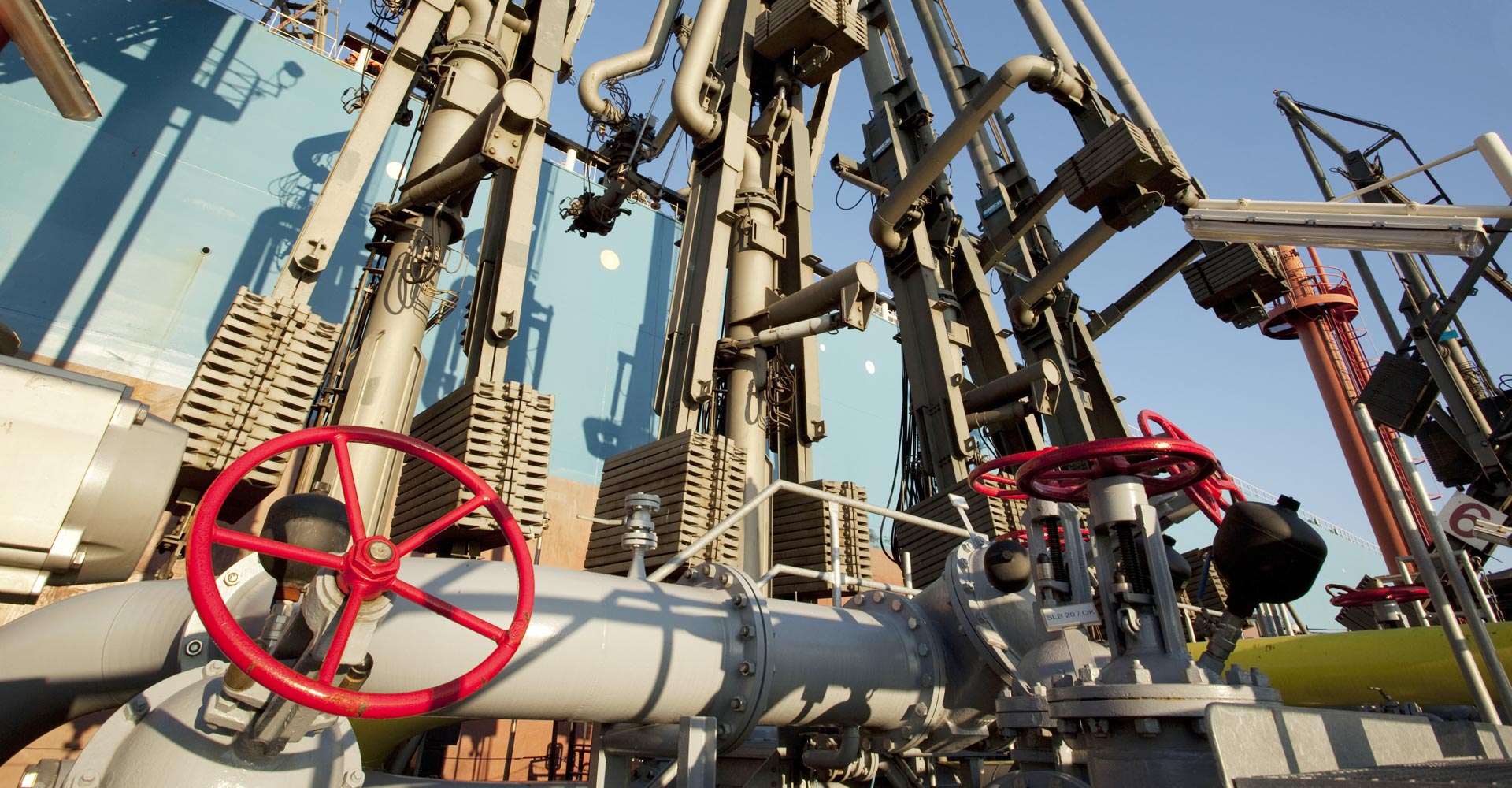Crude Oil
Crude oil is a fossil fuel that mainly consists of hydrocarbons and also contains small amounts of sulfur, nitrogen and oxygen. It is formed under great pressure and heat by the conversion of organic matter and occurs, for example, in sandstone and fractured limestone covered by impermeable layers. It is also found in oil shales and sands and in some cases may rise directly to the surface. Humans have used such “oil lakes” since ancient times.
The systematic exploitation of crude oil deposits, however, did not begin until the mid-19th century. “Black gold,” as the raw material is also called due to its versatile usability, consists of at least 500 components. In addition to a large range of hydrocarbons (alkanes, cycloalkanes and aromatics) and naphthenic acids, phenols, resins, aldehydes and organic sulfur compounds (e.g. thioalcohols), crude oil also contains nitrogen, oxygen, and traces of the metals vanadium and nickel. Its color varies from light yellow to black, and it darkens when exposed to light. Fresh crude oil often has a yellow to green-blue fluorescence. Depending on its sulfur content, oil is classified as “sweet” or “sour,” with “sour” crude oil having a disagreeable garlicky odor due to its high sulfur content. Its density is between 0.82 and 0.94 grams per cubic centimeter, and prolonged contact with air increases its viscosity because the volatile components gradually evaporate. It readily dissolves in ether, benzene, or carbon tetrachloride; but dissolves poorly in ethanol, and not at all in water.
The crude oil is subjected to a cleaning process during which it is freed from coarse impurities and degassed, then desalted and dehydrated in a further step. Following this process, the material is ready for refining.
The composition of the various crude oils and thus their quality depends on their origin. The lighter and sweeter a crude oil is, the higher the quality. Sulfur content is a particularly strong indicator. For example, crude oils from OPEC countries, including Iraq, Iran, Kuwait, Saudi Arabia and Venezuela, are usually of slightly poorer quality and are therefore less expensive than the higher-quality crudes known as North Sea Brent and U.S. WTI. Crude oil from the Russian Urals is another cheaper variety. According to current knowledge, the largest crude oil deposits are in Saudi Arabia, followed by Venezuela and Iran. Canada and the United States are in eleventh and twelfth place respectively.
The fossil fuel crude oil forms the basis of most fuels to generate motion that power a wide range of vehicles and means of transport as well as fuels to generate heat, e.g. heating oil, diesel, gasoline, jet fuel and bunker oil. Moreover, it is used in engineering and automotive technology as a lubricant; in construction in the form of bitumen to protect buildings against water; in road construction; to generate electricity and in the chemical industry to manufacture plastics, cosmetics, pharmaceuticals and other chemical products. Due to current laws regarding the use of renewable energies, the use of products derived from crude oil such as heating oil is declining in the heating market in Europe.
According to the International Energy Agency (IEA), in 2015 the daily production of oil products was well over 90 million barrels. Due to continuous developments in identifying crude oil reserves as well as technology to extract the raw material, the estimated quantities available for extraction have increased dramatically in recent years. The extraction of crude oil from Canadian oil sands alone will increase the available amount by nearly 40 billion tons.
Oiltanking and its tank terminals provide comprehensive logistics solutions for the storage and handling of petroleum products, chemicals, gases and other products.
Status: December 2015
All information subject to change. Errors and omissions excepted.

